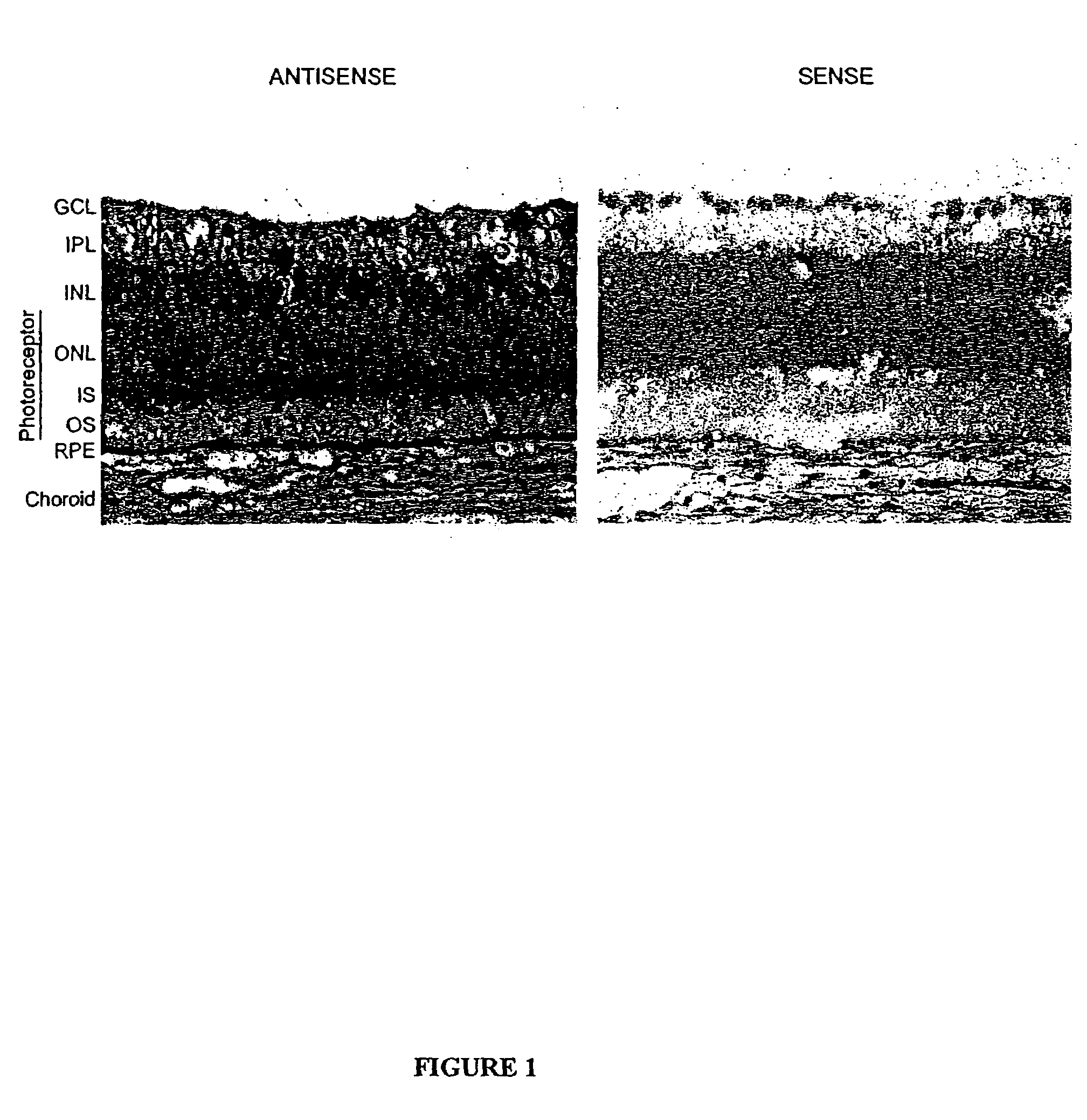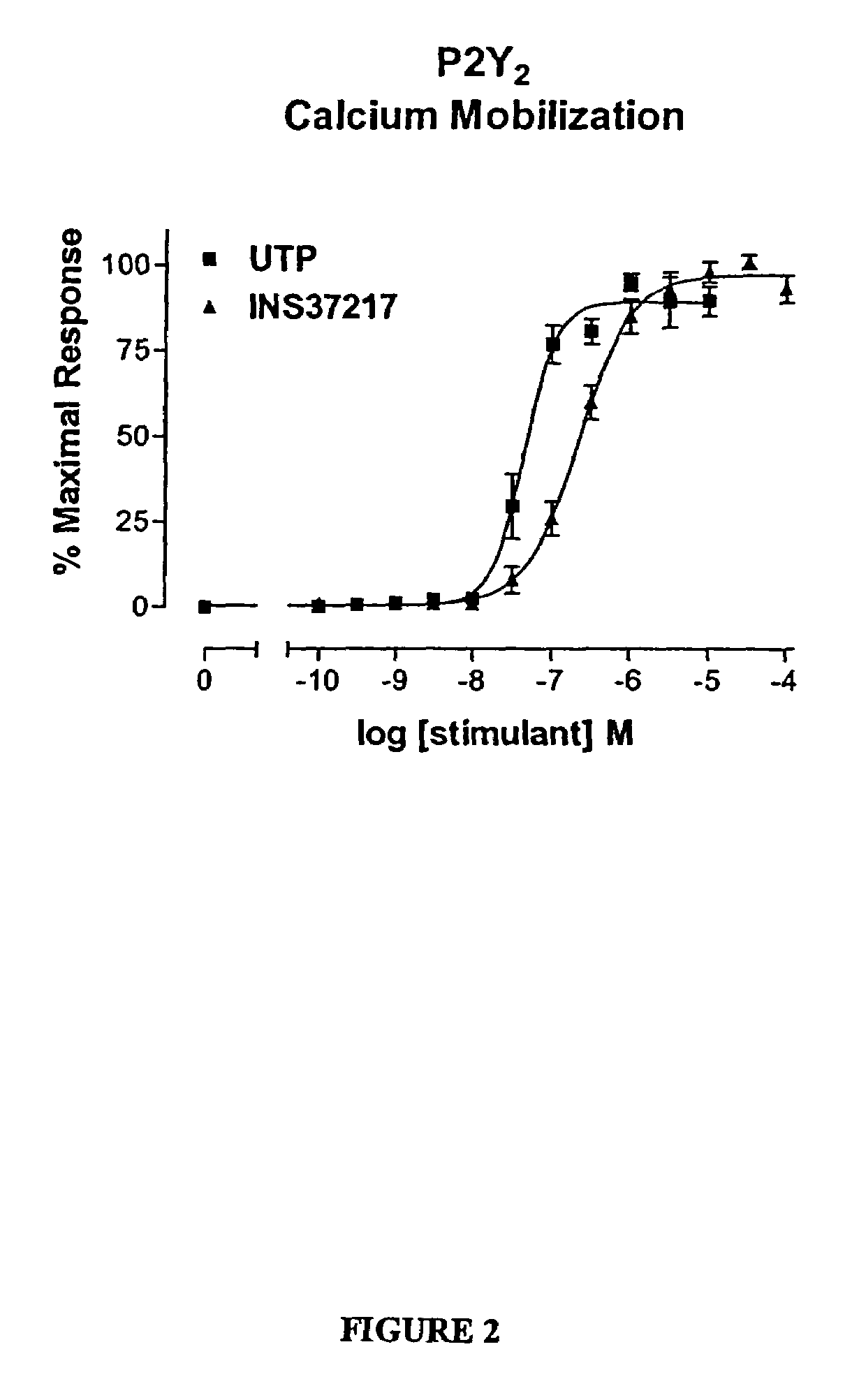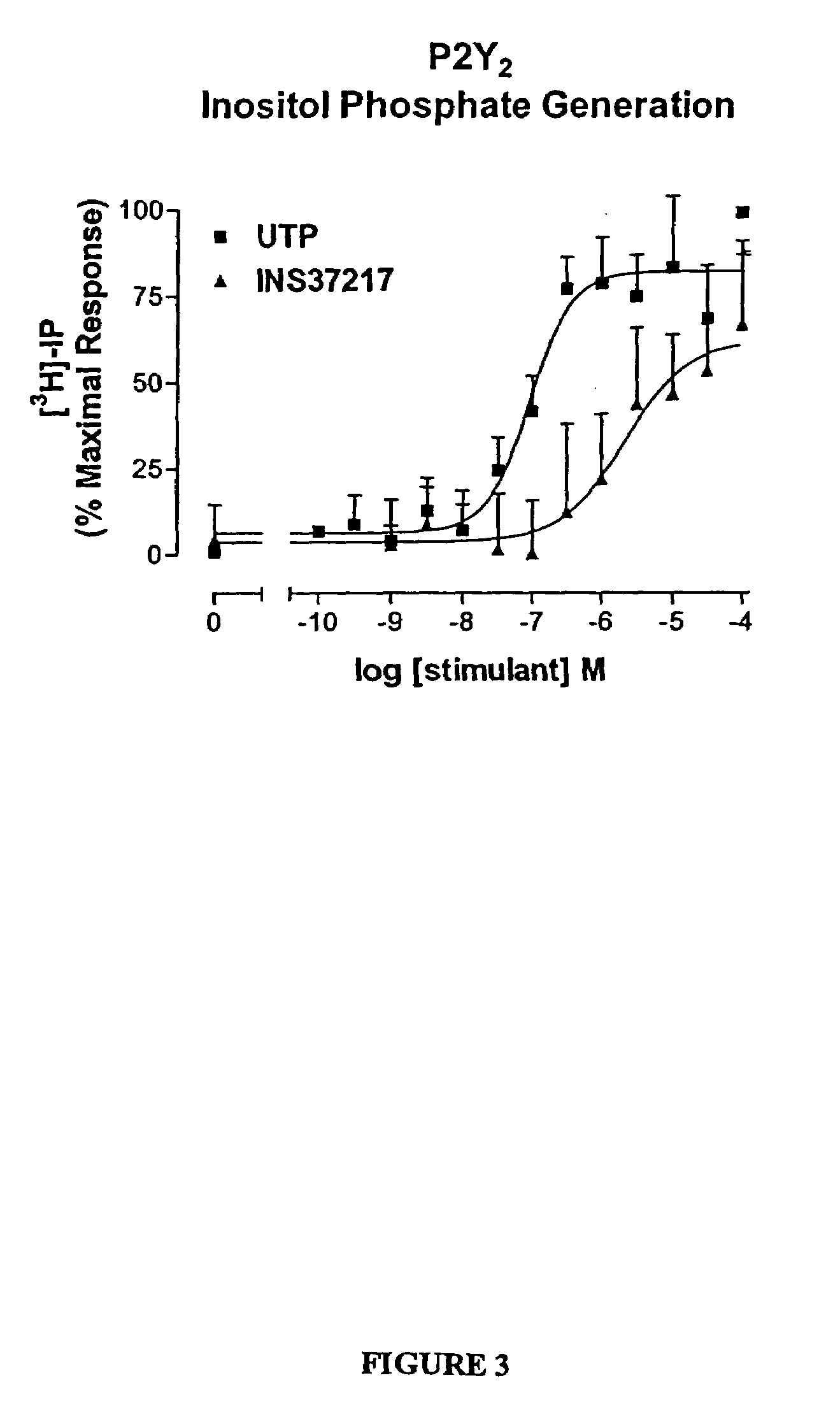Pharmaceutical formulation comprising dinucleoside polyphosphates and salts thereof
a technology of dinucleoside polyphosphate and dinucleoside polyphosphate, which is applied in the direction of prosthesis, peptide/protein ingredients, aerosol delivery, etc., can solve the problems of no pharmacological approach employed in the treatment of rhegmatogenous retinal, loss of vision, and irreversible blindness, etc., to improve stability, easy to handle during manufacture, and resistant to hydrolysis
- Summary
- Abstract
- Description
- Claims
- Application Information
AI Technical Summary
Benefits of technology
Problems solved by technology
Method used
Image
Examples
example 1
Localization of P2Y2-Receptor mRNA in Retina and RPE
[0118]Cellular localization of P2Y2-receptor mRNA in fresh frozen cross-sections of albino rabbit retina / RPE / choroid tissue was investigated by using nonisotopic in situ hybridization techniques. FIG. 1 shows a representative in situ hybridization result from antisense and sense digoxigenin (DIG)-labeled riboprobes engineered based on the P2Y2 receptor mRNA sequence. Hybridization of antisense and sense riboprobes was visualized by immunohistochemistry using alkaline phosphatase-conjugated anti DIG antibody, and DIG-specific signal was detected using a chromophore reaction against the alkaline phosphatase, yielding purple / black staining. The tissues were also counterstained with nuclear fast red. The control sense probe (right) shows no specific labeling. Labeling with the anti-sense probe showed P2Y2 receptor mRNA localization in scattered nuclei in the ganglion cell and inner nuclear layers and through the inner segment layer of ...
example 2
Effects of Synthetic P2Y2 Agonist UP4dC Tetrasodium Salt on Cloned Human P2Y2 Receptors
[0119]The dinucleotide, {P1-(uridine 5-)-P4-(2′-deoxycytidine 5′-)tetraphosphate tetrasodium salt}(UP4dC, or referred to as INS37217), was tested for its activity (potency, efficacy, and selectivity) at cloned human P2Y receptor subtypes, which were stably expressed in 1321N1 astrocytoma cells. Activity was assessed using two in vitro indices of cell activation: 1) mobilization of intracellular calcium stores, and 2) accumulation of [3H]-inositol phosphates ([3H]-IP). UP4dC tetrasodium salt was evaluated for activity in both assays against cells expressing the P2Y1, P2Y2, P2Y4, or P2Y6 receptors.
[0120]UTP tetrasodium salt and UP4dC tetrasodium salt induced mobilization of cytosolic calcium in 1321N1 astrocytoma cells expressing human P2Y2 (FIG. 2) receptors with EC50 values of 0.22 μM and 0.8 μM, respectively. The calcium response to 100 μM UP4dC tetrasodium salt was 100% of the maximal response t...
example 3
UP4dC Tetrasodium Salt Stimulates Fluid Absorption in Freshly Isolated RPE Monolayers
[0122]Fluid transport across freshly isolated, intact bovine and human fetal RPE monolayers was studied using a modified capacitance probe technique (Frambach, et al., Biophys. J 47(4):547–52 (1985); Hughes, et al., J Gen. Physiol. 83(6):875–99 (1984)).
[0123]The RPE was mounted vertically in a modified Ussing chamber such that apical and basolateral membranes were separately exposed to Ringer's solutions held in bathing reservoirs. Stainless steel capacitive probes were lowered into the apical and basolateral bathing reservoirs to sense the capacitance of the air gap between the probe and fluid meniscus. Fluid transport rate Jv (μL cm−2 hr−1) was determined by monitoring fluid movement-induced changes in the air gap capacitance at the apical and basolateral baths.
[0124]Representative effects of agonist on J, in human fetal RPE are shown in FIG. 4. Positive Jv values reflect fluid absorption (apical-...
PUM
| Property | Measurement | Unit |
|---|---|---|
| temperature | aaaaa | aaaaa |
| osmolarity | aaaaa | aaaaa |
| osmolarity | aaaaa | aaaaa |
Abstract
Description
Claims
Application Information
 Login to View More
Login to View More - R&D
- Intellectual Property
- Life Sciences
- Materials
- Tech Scout
- Unparalleled Data Quality
- Higher Quality Content
- 60% Fewer Hallucinations
Browse by: Latest US Patents, China's latest patents, Technical Efficacy Thesaurus, Application Domain, Technology Topic, Popular Technical Reports.
© 2025 PatSnap. All rights reserved.Legal|Privacy policy|Modern Slavery Act Transparency Statement|Sitemap|About US| Contact US: help@patsnap.com



